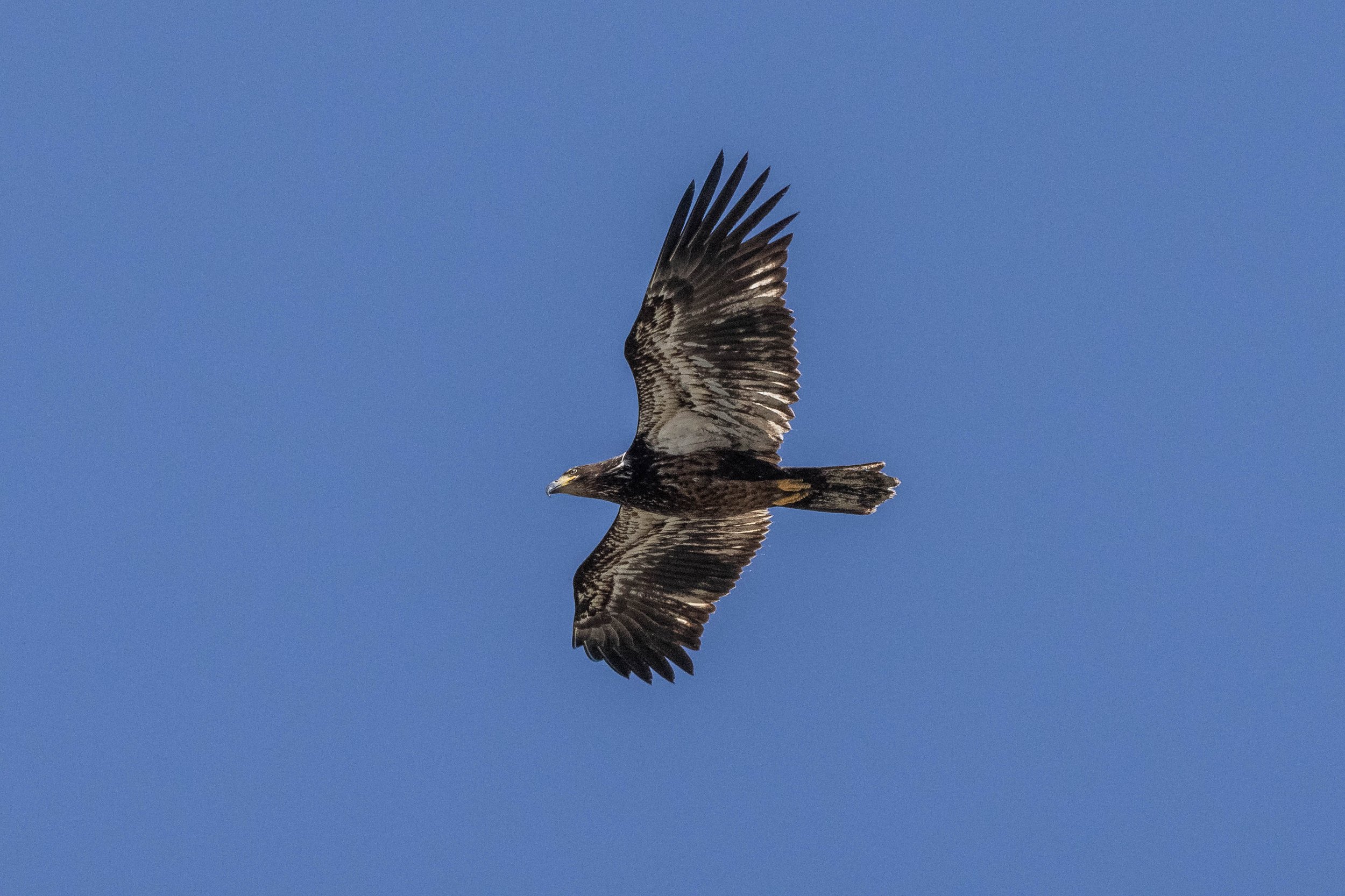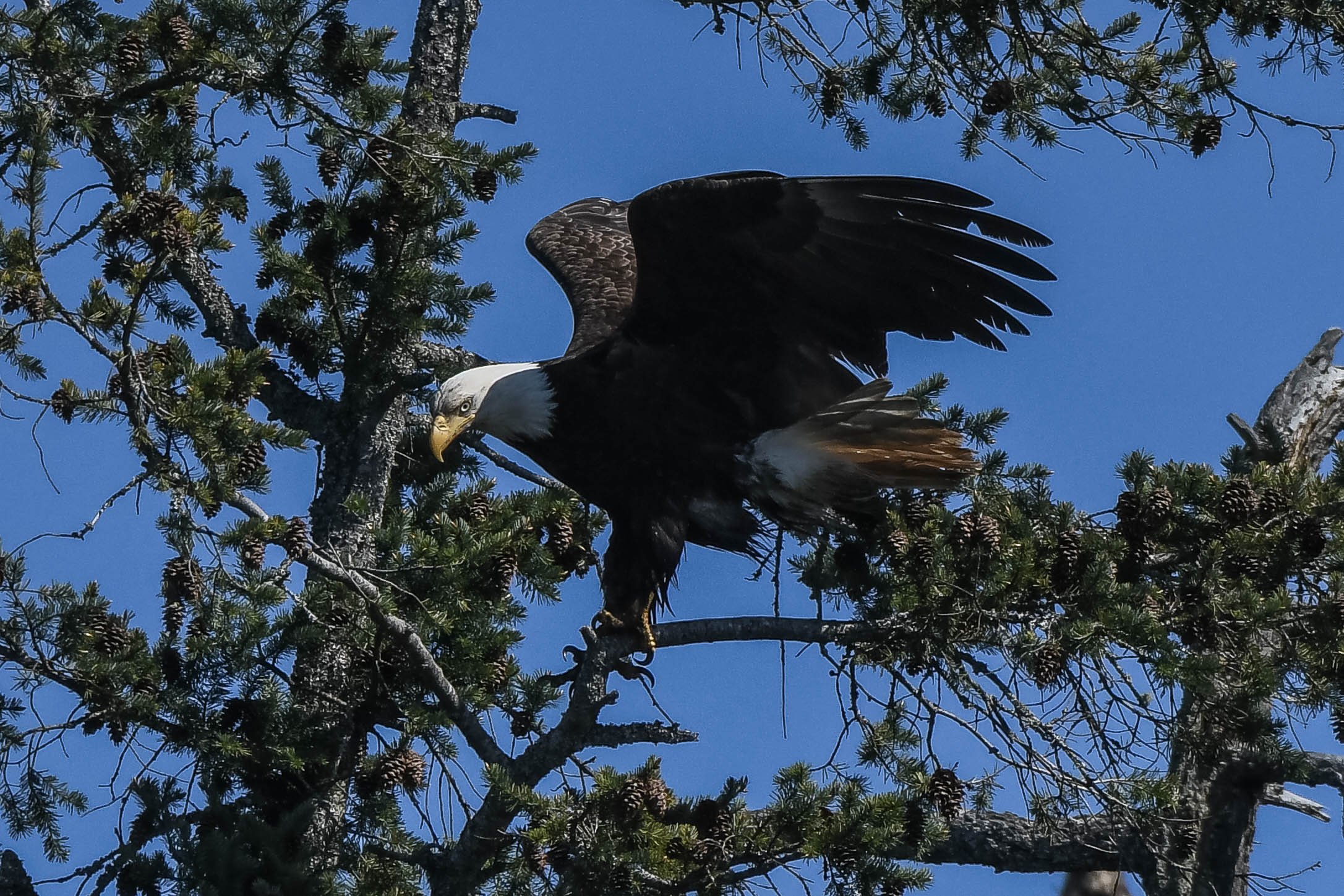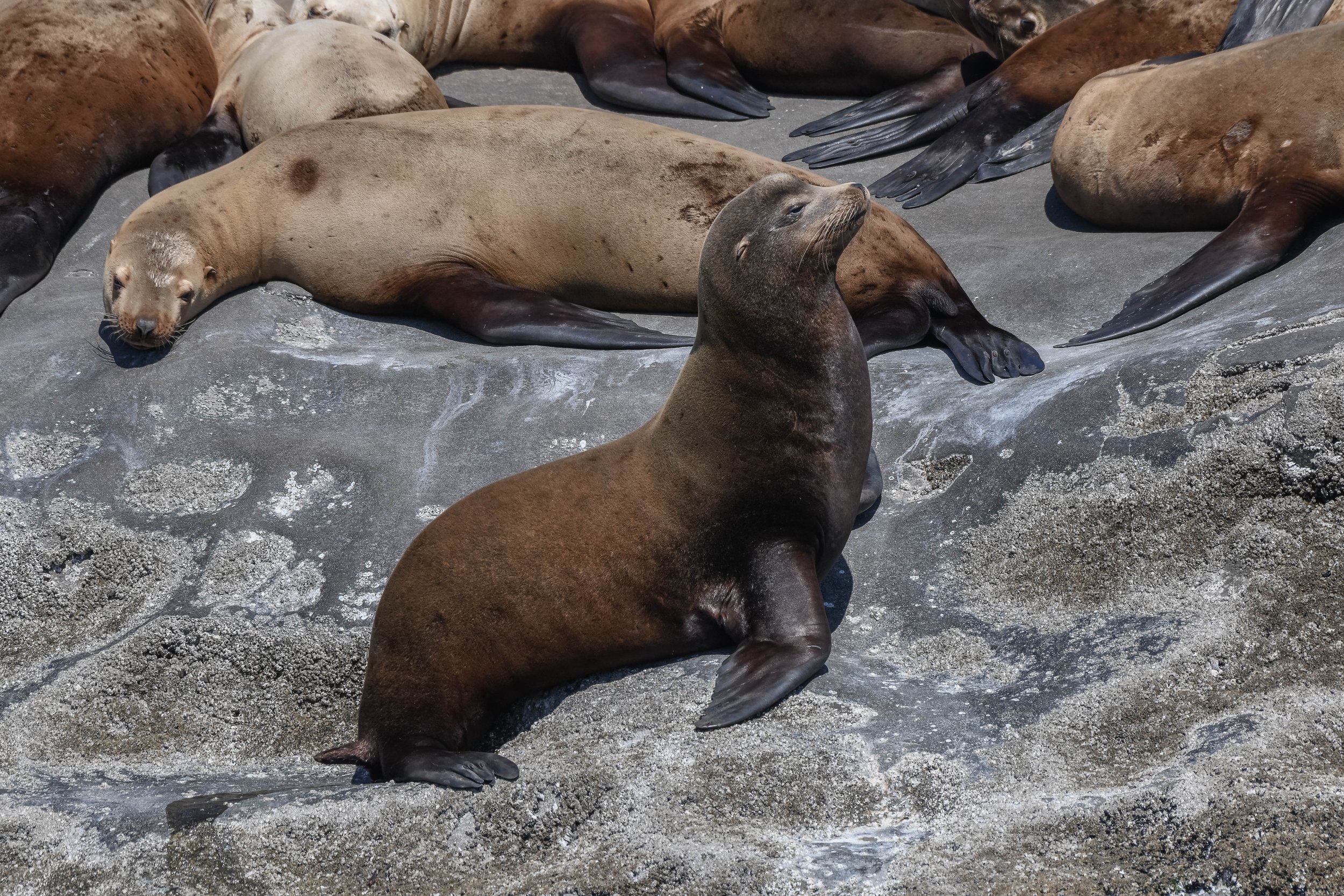April 16, 2025 - The T049As close to home, again!
The sun was shining, and the waves were splashing as we popped off the dock, heading excitedly toward the Strait of Georgia following a report of whales! Just ten minutes into our journey, we spotted blows and the unmistakable black dorsal fins—what luck! Normally, it takes a bit more searching. Who could it be, so close to home?
Our onboard naturalists quickly grabbed their cameras to capture ID shots and figure out which whales we had come across. Those familiar fins belonged to none other than the T049As! We were able to identify them almost as quickly as we spotted them—some of our absolute favourites. The whales present today were:
T049A Nan ♀ (1986)
T049A3 Nat ♂ (2011)
T049A4 Neptune ♂ (2014)
T049A5 Nebula ♀ (2017)
T049A6 Charlie II ♂ (2022)
Did you know the matriarch, Nan, is so well-known in our area that she was named after Nanaimo? Whenever we get a report of orca in the harbour, our first guess is always the T049As—and more often than not, we're right. This pod has even made local news a few times due to their close encounters in the harbours. But why do they venture into those spaces?
The best theory we have is that Nan has developed a specialization in hunting seals within harbours and has passed those skills on to her offspring. Nan and her family are Transient—or Bigg’s—Orca, the mammal-hunting ecotype. Orcas live in matriarchal societies with very close-knit family bonds, much like humans. The mother teaches and guides her children throughout their lives.
Transient orca often use the geography of their environment to hunt more effectively—shallow bays, dead ends, and shorelines help trap their prey. We think Nan’s family is using our man-made marinas in the same way, likely coordinating to block escape routes and conserve energy instead of engaging in long, exhausting chases. It must be a pretty successful strategy—Nan has had six calves, all of whom have survived, which is quite rare. Sadly, orca calves only have about a 50% survival rate in their first year, so Nan is clearly doing something right!
But wait—if she has six calves, why did we only see five whales today?
Great question! Typically, orca stay by their mother’s side for life, especially the males—we affectionately call them “big momma’s boys.” But this pod breaks the mold a bit. Nan’s two older sons, T049A1 (Noah) and T049A2 (Jude), are often off doing their own thing. Jude is a bit of a lone wolf, seemingly content with the bachelor life, while Noah occasionally branches off but regularly returns to the family.
We have a theory that maybe Nan runs a tight ship—strict but loving. It could explain why the older boys like a bit of independence. There’s even a moment we remember when Nan launched Nebula clean out of the water as a calf—who knows what she did to deserve that, but she must’ve been misbehaving!
After some wonderful time with our local favourites, we continued on to explore more of the incredible wildlife in our region. We saw several bald eagles, ranging in age and size. Did you know bald eagles don’t develop their iconic white head and tail until they're about five years old?
Next, we met our charming pinniped trio. All three local species were out enjoying the sunshine. The smallest, our adorable harbour seals, were warming themselves on the rocks after a dip in the chilly water. The California Sea Lions—those barking, chocolate-coloured characters—were lounging on the Harmac log booms. These floating logs rise and fall with the tide, offering the sea lions a safer rest spot than exposed rocks at high tide when orca might be lurking.
Then there were the Steller Sea Lions—the largest of the three species—hauled out at a spot we call Stinky Rocks. With their impressive size and powerful jaws, they’re less worried about predators, especially when they gather in such large numbers. We’ve even seen them posture against orcas—strength in numbers!
As we made our way past Gabriola Bluffs, we spotted cormorants tucked into their nests, their sleek black feathers glinting in the sun. These expert divers can plunge over 100 feet into the Salish Sea in search of fish. Their feathers absorb water, helping them stay less buoyant for better diving. That’s why you’ll often see them perched with wings outstretched, drying off in the sun and wind—nature’s drying rack.
After a beautiful day packed with wildlife sightings and sunshine, we headed back home.
Please enjoy the photos taken by Naturalists Aly Kohlman and Vanessa Vereschahen.
T049A Nan powering through the waves. Photo by Aly Kohlman.
T049A Nan with T049A6 Charlie surfacing beside her. Photo by Aly Kohlman.
T049A3 Nat with T049A5 Nebula his little sister beside him, can you spot her fin? Photo by Aly Kohlman.
T049A4 Neptune. Photo by Aly Kohlman.
T049A3 Nat showing a little eye patch. Photo by Aly Kohlman.
Photo bombed by a wave! Photo by Aly Kohlman.
T049A5 Nebula. Photo by Vanessa Vereschahen.
T049A5 Nebula making a splash! Photo by Vanessa Vereschahen.
T049A5 Nebula. Photo by Vanessa Vereschahen.
T049A3 Nat with T049A Nan following behind. Photo by Vanessa Vereschahen.
A family photo! Photo by Vanessa Vereschahen.
A very B.C. photo! Photo by Vanessa Vereschahen.
T049A3 Nat in the lead with T049A5 Nebula close behind and T049A Nan coming up the rear! Photo by Vanessa Vereschahen.
An Oyster catcher with its striking orange beak. Photo by Aly Kohlman.
Surf scoters taking flight. Photo by Aly Kohlman.
Can you spot the 8 eagles in this photo? Photo by Vanessa Vereschahen.
A juvenile bald eagle soars overhead. Photo by Vanessa Vereschahen.
How many eagles can you spot in this photo? Photo by Aly Kohlman.
Keeping an eye on us. Photo by Aly Kohlman.
A fluffy juvenile bald. Photo by Aly Kohlman.
Harbour seals in the warm sunshine. Photo by Vanessa Vereschahen.
A California Sea Lion striking a pose. Photo by Aly Kohlman.
A Steller Sea Lion yelling away! Photo by Aly Kohlman.
An action shot! Photo by Aly Kohlman.
A large male Steller Sea Lion. Photo by Vanessa Vereschahen.
Some fuzzy Stellers. Photo by Aly Kohlman.
Sprawled out. Photo by Aly Kohlman.
A proud looking California Sea Lion. Photo by Vanessa Vereschahen.
This can not be comfortable. Photo by Aly Kohlman.
A river otter on the log booms! Photo by Aly Kohlman.
Can you spot their claws? Photo by Aly Kohlman.
Cormorants in their breading plumage. Photo by Vanessa Vereschahen.
A warm sunny spot that seems to be a favorite of our cormorants. Photo by Vanessa Vereschahen.
Sea stars at low tide on the Gabriola Bluffs. Photo by Vanessa Vereschahen.


































